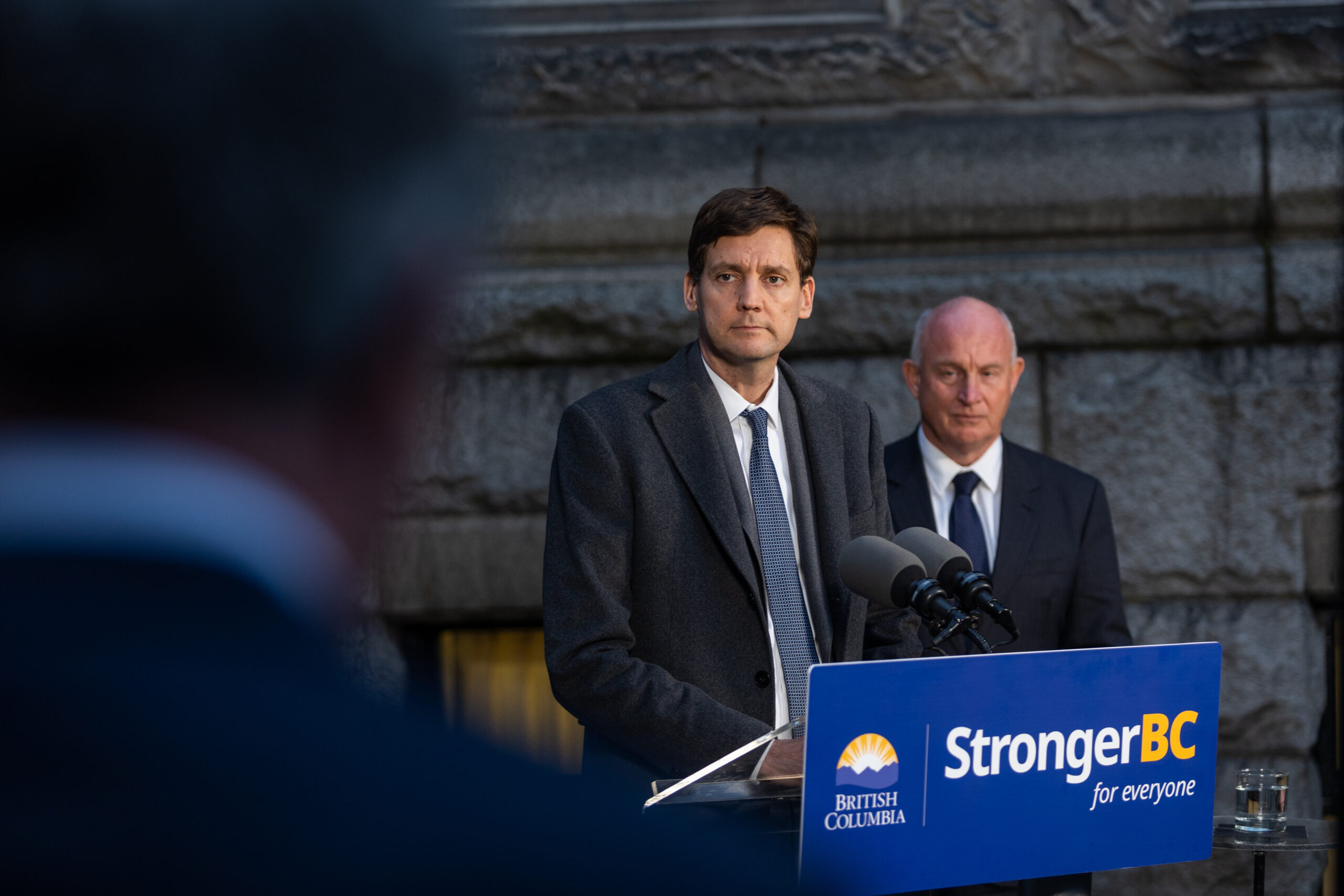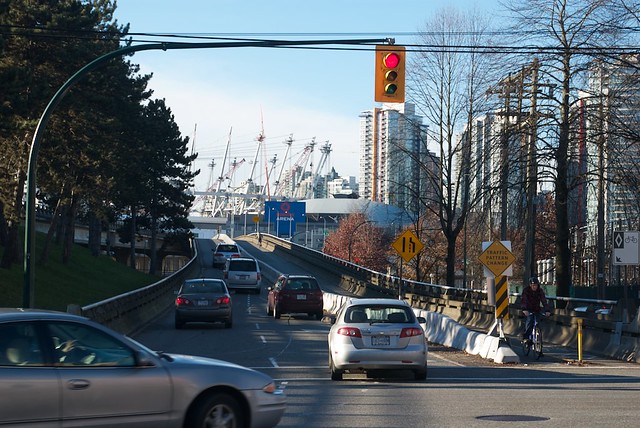On July 27, council’s Standing Committee on Transportation and Traffic voted to begin a comprehensive planning process for the future of the False Creek Flats, including exploring the reconfiguration or removal of the Dunsmuir and Georgia viaducts into the East side. The idea of reducing or removing freeways is something lots of folks are talking about, but this plan, called the Eastern Core Strategy Study, is about a lot more than just freeways.
At the heart of the study is the acknowledgment that reducing or completely removing the viaducts will bring fundamental change to this area, one of the last areas in the city with the potential for major redevelopment. The initial phase of the study, as adopted by council, will take what staff calls a “big picture” look at the flats, including “land use and development potential” should the viaducts come down. This area includes not only city-owned lands, but also lands owned by Providence healthcare (the Catholic authority which runs St. Paul’s hospital) and developer giant Concord Pacific.
Although the first phase of the strategy carefully avoids defining what it means by “development” (the staff presentation to Council focused on uses like parks), the elephant in the room is, of course, opening up what’s currently an industrial wasteland bisected by freeways to commercial real estate development. Read: condos.
Let’s put this into context. The recent upzoning of building heights in Chinatown, fiercely resisted by low-income people in Chinatown and neighbouring areas (but supported by the Vancouver Chinatown Revitalization Committee, whose support for the Eastern Core Strategy was delivered at the council meeting by Jordan Eng, a real estate agent in Chinatown), has opened up the potential for much more development of what pro-developer groups and individuals call “mixed-income communities” in the Downtown Eastside. This boils down to rebranding the low-income area for wealthy condo buyers, who move into the neighbourhood and initiate a process of excluding low-income people. The Downtown Eastside Neighbourhood Council has documented this process, which spreads Zones of Exclusion through the neighbourhood as “mixed-income” developments go up.
Mixed-income means mixed levels of power and access, and this plays out on the ground in ways that are decidedly against the interests of low-income people. Community activists at the Carnegie Community Action Project have identified a process of “ripple effects,” including rent increases and other factors that harm low income people, ripples that move out from condo projects multiplying in the neighbourhood. The proximity of the Eastern Core to the rest of the DTES makes it seem likely that any residential development in the area would also “ripple out” into the neighbourhood. Coupled with the new allotment for increased condo density in Chinatown, the Eastern Core plan would serve to physically surround the DTES with a new ring of condo development. The potential threat to a community that’s already under siege is undeniable.
Despite the obvious implications, no explicit mention is made in the Eastern Core Strategy about affordable housing, or about how the City will ensure that any development in the flats doesn’t negatively impact the low-income community. The staff report does mention the DTES Local Area Plan as a process that’s already under way that, and which will be affected by any changes in the flats area. However, given that City policies tend not to acknowledge the existence of indirect negative impacts of development in proximity to low-income communities, there’s no guarantee that the existence of the Local Area Plan process will mean that DTES community members have a say in what happens in the Flats. Although the False Creek Flats area is not technically inside the boundaries that both community groups and the city use to define the Downtown Eastside, those boundaries are just lines on a map that don’t stop the effects of gentrification from spilling into the neighbourhood.
Despite the potential disaster it could represent for the DTES and the city in general (will your neighbourhood be the next one to be gentrified? Will you be the next person pushed out?), there are also some things to like about the Eastern Core Strategy study. Putting transportation infrastructure into a larger planning context that includes land-use and overall feel of the neighbourhood is a great idea, and a damn sight better than the spot rezoning trend we’ve seen recently that mostly benefits developers. The Greenest City 2020 Action Plan came up many times in the council meeting, including ideas as exciting as returning flowing water to the flats or even reconnecting False Creek with Burrard Inlet in a continuous band of wetland ecology. There is also talk of a Green Enterprise Zone that would focus on a diversity of businesses providing “green jobs” in an ecologically responsible business zone.
Nobody can argue with a greener, more ecologically responsible city, but if it comes at the expense of low-income people and other marginalized communities, particularly First Nations people, whose land this is, and who are so disproportionately represented in the low-income communities of the DTES, then how green can it really be? As the environment becomes the fashionable issue of the day, being “green” becomes a selling point that increases the price, and therefore the exclusivity, of a development. Without provisions in the Strategy to ensure that the existing low-income community will be included in this planning process, or to ensure that any of those green jobs go to those most in need, the raison d’etre of the False Creek Flats redevelopment plan is put into question.
Perhaps the thing to like best about the Eastern Core Strategy Study is that the first phase of the planning process, to begin in August 2011 and go until January of 2012, is about answering the “big questions” about the flats, and setting a policy direction that will guide the rest of the process. Here is where multiple layers of public consultation are planned, including a “Design Ideas Contest” as well as more traditional methods like open houses and public meetings. The best thing about the City’s call for public input, and speaking out to say that “the public may well add new ideas” to the process (according to Brent Toderian, Director of Planning), is that the public (that’s you and me) can hold them to it. The next few months will be a crucial time where the big picture direction and priorities for the flats will be determined, especially leading up to the Design Ideas Contest. City staff have said that beyond that point, and specifically in the Design Ideas Contest, any suggestions submitted by the public will be “required to show that their ideas don’t conflict with existing Council directions” on the policy and overall goals for the area. So there is urgency for those of us who care about an inclusive and diverse city to speak up for what we want to see happen in the False Creek Flats.
Certainly a green agenda will be well represented, and that’s an excellent thing. The key is to make sure that it’s a green agenda that also includes the perspectives of diverse and currently marginalized communities, voices who are often missing from discussions about what green means. If we become the Greenest City, but also the most exclusive and least diverse, then what have we gained? The proximity to the most marginalized neighbourhood in the city can’t be ignored here, and this process has the opportunity to either greatly improve conditions for people in that community by providing housing, jobs, and a healthier environment to live in, or tear the heart out of one of the city’s most vibrant and diverse neighbourhoods. The time for setting the agenda on the flats is now, and we need to use all the tools available to us — and maybe make up some new ones — to make sure that all voices get to have a say.
download the first phase Eastern Core Strategy Study staff report under Item #2 at: http://vancouver.ca/ctyclerk/cclerk/20110726/ttra20110726ag.htm
Erin Innes is a freelance writer and Permaculture activist working for food and environmental justice in occupied Coast Salish Territory, Vancouver BC. Follow her at passionatepermaculture.ca
















Joseph Jones
August 1, 2011 at 6:36 pm
Find a map of the target area for Eastern Core Strategy on page 5 of the report to Council linked to at the end of the article. Look at that graphic as one piece of a big puzzle. Think about what is missing. Think about what is named and how it is named. Think about taking only four months during municipal election season to establish such huge directions.
Five hints only — looking in a circle eastward since the article rightly pays a lot of attention to the Downtown Eastside. Where is Strathcona? What about the 17 or so acres of land at the Britannia site that is specifically excluded from new local area planning for Grandview-Woodland (Appendix B, Policy 3, of Vancouver’s Next Community Plans, report approved by Council on 28 July 2011)? Why is Grandview-Woodland first among three local areas now to be “planned” faster and simultaneously, when local area residents have strong doubts about the need? Whatever happened to the “neighbourhood centre” planning that was to center at Hastings and Nanaimo? Finally, how happy is Mount Pleasant with their recently concluded local area plan and the respect that it has already been shown?
Erin Innes
August 1, 2011 at 10:45 pm
@Joseph Jones: All excellent questions. The short timeframe of the period to answer the “Big Questions” about this strategy, especially since so many community planning processes nearby – Grandview-Woodlands, DTES Local Area Plan, etc — will take much longer, seems at the very least imprudent. I try not to be suspicious, but why the big hurry? More people need to be talking about this.